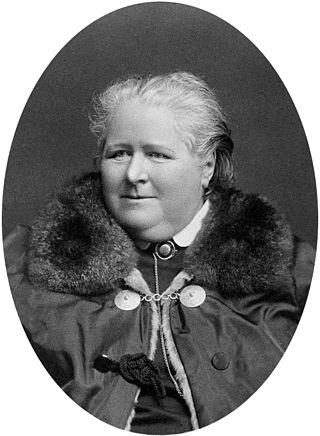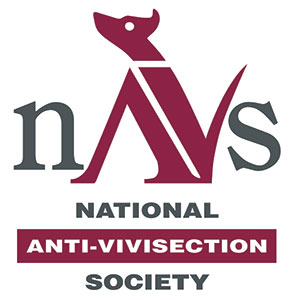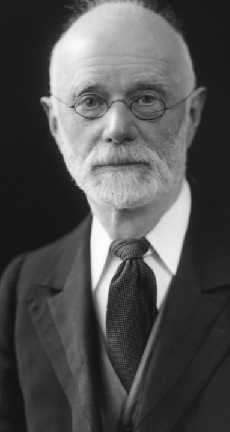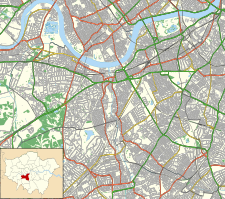
Vivisection is surgery conducted for experimental purposes on a living organism, typically animals with a central nervous system, to view living internal structure. The word is, more broadly, used as a pejorative catch-all term for experimentation on live animals by organizations opposed to animal experimentation, but the term is rarely used by practising scientists. Human vivisection, such as live organ harvesting, has been perpetrated as a form of torture.

Battersea Park is a 200-acre (83-hectare) green space at Battersea in the London Borough of Wandsworth in London. It is situated on the south bank of the River Thames opposite Chelsea and was opened in 1858.

Frances Power Cobbe was an Anglo-Irish writer, philosopher, religious thinker, social reformer, anti-vivisection activist and leading women's suffrage campaigner. She founded a number of animal advocacy groups, including the National Anti-Vivisection Society (NAVS) in 1875 and the British Union for the Abolition of Vivisection (BUAV) in 1898, and was a member of the executive council of the London National Society for Women's Suffrage.

Battersea Dogs & Cats Home is an animal rescue centre for dogs and cats. Battersea rescues dogs and cats until an owner or a new one can be found. It is one of the UK's oldest and best known animal rescue centres. It was established in Holloway, London, in 1860 and moved to Battersea in 1871.

Maurice Beddow Bayly was an English physician, anti-vivisection and anti-vaccination activist, and Theosophist, best known for his opposition to animal experimentation.

The National Anti-Vivisection Society (NAVS) is an international not-for-profit animal protection group, based in London, working to end animal testing, and focused on the replacement of animals in research with advanced, scientific techniques. Since 2006, the NAVS has operated its international campaigns under the working name Animal Defenders International (ADI), and the two groups now work together under the ADI name.
Edward Collis Berdoe was an English physician, anti-vivisectionist and writer. He studied and wrote on the works of Robert Browning. He also campaigned against medical experiments on human patients and animals.

The Brown Dog affair was a political controversy about vivisection that raged in Britain from 1903 until 1910. It involved the infiltration of University of London medical lectures by Swedish feminists, battles between medical students and the police, police protection for the statue of a dog, a libel trial at the Royal Courts of Justice, and the establishment of a Royal Commission to investigate the use of animals in experiments. The affair became a cause célèbre that divided the country.

Emilie Augusta Louise "Lizzy" Lind af Hageby was a Swedish-British feminist and animal rights advocate who became a prominent anti-vivisection activist in England in the early 20th century.

The Cruelty to Animals Act 1876 was an Act of the Parliament of the United Kingdom which set limits on the practice of, and instituted a licensing system for animal experimentation, amending the Cruelty to Animals Act 1849. It was a public general Act. The Act was replaced 110 years later by the Animals Act 1986.
Women have played a central role in animal advocacy since the 19th century. The animal advocacy movement – embracing animal rights, animal welfare, and anti-vivisectionism – has been disproportionately initiated and led by women, particularly in the United Kingdom. Women are more likely to support animal rights than men. A 1996 study of adolescents by Linda Pifer suggested that factors that may partially explain this discrepancy include attitudes towards feminism and science, scientific literacy, and the presence of a greater emphasis on "nurturance or compassion" amongst women. Although vegetarianism does not necessarily imply animal advocacy, a 1992 market research study conducted by the Yankelovich research organization concluded that "of the 12.4 million people [in the US] who call themselves vegetarian, 68% are female, while only 32% are male".

The Animal Defence and Anti-Vivisection Society (ADAVS) was an animal rights advocacy organisation, co-founded in England, in 1903, by the animal rights advocates Lizzy Lind af Hageby, a Swedish-British feminist, and the English peeress Nina Douglas-Hamilton, Duchess of Hamilton.
The New England Anti-Vivisection Society (NEAVS) is a national, registered 501(c)(3) nonprofit organization "dedicated to ending the use of animals in research, testing, and science education" and replacing them with "modern alternatives that are ethically, humanely, and scientifically superior."

The Brown Animal Sanatory Institution sometimes referred to as the Brown Institution was an institute for veterinary research laboratory founded in 1871 in London, England. It was established from a sum of £20000 left by Thomas Brown in his will. It was intended to be a centre for veterinary research and its early work was mainly in disease and physiology. It also served as a veterinary hospital. Seven out of its eight directors became Fellows of the Royal Society. In the late 1870s, the institute became a target of the anti-vivisection movement in England and the building on Wandsworth road was destroyed by German bombs in 1944.

Josiah Oldfield was an English lawyer, physician and promoter of his own variant of fruitarianism which was virtually indistinguishable from lacto-ovo vegetarianism. He became a versatile author, a prolific writer of popular books on dietary and health topics.

Herbert Lumley Snow was an English surgeon, anti-vivisectionist, cancer researcher and medical writer.
Gertrude Baillie-Weaver was an English suffragette and writer who published as Gertrude Colmore. She co-founded the National Council for Animals' Welfare and wrote in support of animal and human rights. Her books about Suffragette Sally and Emily Wilding Davison were republished in the 1980s.

Bertrand Peter Allinson was a British physician, naturopath and vegetarianism activist.

Robert BellFRFPS was an English physician who specialised in gynaecology and oncology and was vice-president of the International Cancer Research Society. He was also a naturopath and medical writer who published several books on cancer and other diseases. Bell was an advocate for alternative cancer treatments, including vegetarianism. His promotion of such treatments led to the oncologist Ernest Francis Bashford accusing him of quackery in the British Medical Journal; Bell successfully sued Bashford and the journal for libel.
Sidney George TristMJI was an English animal welfare, anti-vivisection, anti-vaccination, and vegetarianism activist, journalist, and editor of several animal welfare publications.

















